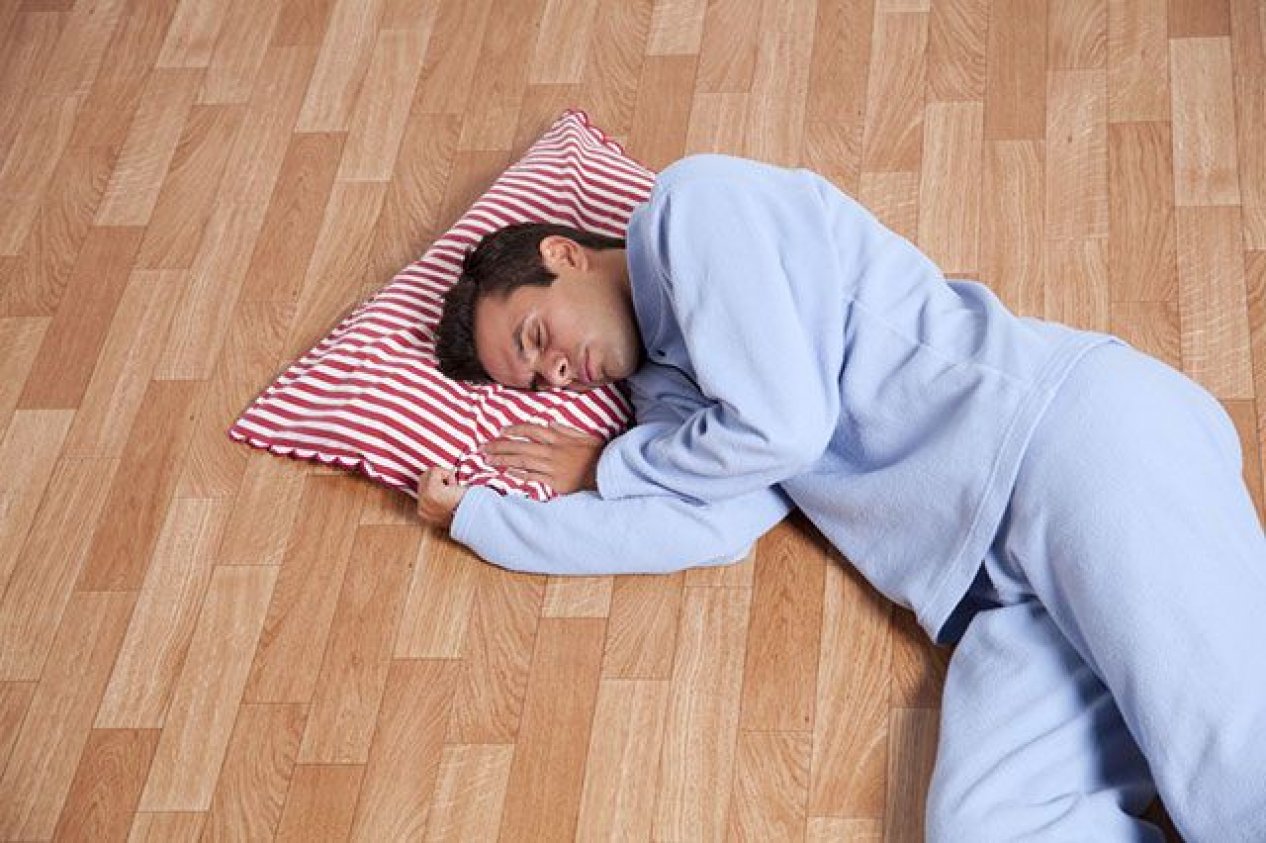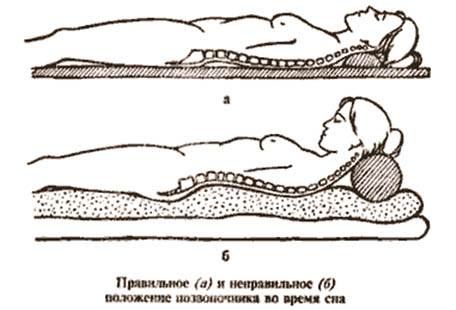
There is a belief that the harder the surface for sleeping, the better for the spine. We decided to check whether scientific data support this claim.
According to a VTsIOM (Russian Public Opinion Research Center) survey, about half of Russians sleep soundly at night - 60% of men and 41% of women reported their satisfaction with the quality of sleep. At the same time, according to a joint study by VTsIOM and Sechenov University, 37% of respondents experience chronic back pain. Similar data were obtained in a survey by hh.ru in Russia's Krasnodar Territory - 44% of respondents who work overtime complain of back and lower back pain. In another survey, it was found that of all those who complain of back pain, 57-71% also experience morning stiffness in the back and night pain at rest. In search of relief, people opt for experiments. Particularly, they try to sleep on the floor. In 2020, famous blogger Vladislav Petrenko decided to sleep on the bare floor for a month as a challenge. According to him, "magic happened" - back pain disappeared, morning awakening became easier and more pleasant, and posture during the day was smoother. Sleeping on the floor is advised for a sedentary lifestyle and for those who are at risk of "earning scoliosis in front of a computer." Proponents of floor sleep write that "a level position causes the neck, head, and spine to straighten and stretch, which helps correct posture."

Although the spine is called the vertebral column, it does not look much like a perfectly straight column. The spine is not one long bone but a structure of separate bone blocks - vertebrae - and cartilage located between them, which perform shock-absorbing functions. The human spine consists of 32–33 vertebrae (seven cervical, 12 thoracic, five lumbar, five sacral, connected to the sacrum, and three to four coccygeal), between which there are 23 intervertebral discs.
The cervical and lumbar parts of the spine are the most mobile, and it is in them that pain most often occurs. Along the entire length of the spine are muscle groups - flexors and extensors, allowing us to perform a variety of movements. In most cases, it is the overstrain of these muscles that leads to non-specific back pain. By the word "non-specific," doctors mean those pains that are not caused by a specific disease, injury or anomaly in the development of the spinal column. That is, in most cases, back pain is muscle pain.
As already mentioned, the spine is not a straight line, and for its normal functioning, you do not need to try to turn it into a perfectly straight line. The most accurate sleeping position is one in which the spine's natural curves are maintained even without the help of muscles. If the spine acquires an unnatural curve during sleep, the muscles tense up and try to return it to its normal position. It turns out that during such sleeping, these muscles will not rest; therefore, in the morning, most likely, they will remind of themselves. This means that the easiest way to get rid of or not get muscular back pain caused by muscle overwork during sleep is to ensure the most physiological posture.
In 2021, Italian researchers conducted a meta-analysis of 39 studies to determine which level of bed stiffness was most effective in reducing back pain. Though they did not consider sleeping on the floor, but they used extra-rigid medical mattresses. It turned out that the most effective way to relieve pain in the lumbar region was mattresses of medium hardness. When resting on such a surface, the shoulders and hips push the mattress a little more, and the lower back only touches it, which ensures that all the natural curves of the spine are preserved. At the same time, a surface that is too hard does not allow the shoulder girdle and hips to "drown", so the lower back muscles remain tense all night. Water mattresses also show similar effectiveness for back pain - they relieve symptoms much better than hard mattresses, while their advantages over conventional medium-hard mattresses have not yet been proven by doctors. At the same time, for overweight people, it is hard mattresses that are most optimal; due to the greater weight, the shoulders and hips push through the average mattress much more than it is anatomically necessary.
For other diagnoses that cause back pain, doctors have also developed the most appropriate sleep options. So, with osteoarthritis, it is best to sleep on your side, tucking your knees to your chest, and for degenerative diseases of the intervertebral discs, sleep on your stomach on a firmer mattress with a flat pillow under your stomach and hips is suitable. However, sleeping on the floor is not named as appropriate for any of the diseases.

The idea of the benefits of sleeping on the floor probably came from anthropological and historical observations. People of those civilizations that still sleep on earth do indeed suffer less back pain, a 2000 article by Michael Tetley showed. In his expeditions around the world, the scientist noted what sleeping positions are taken by those peoples who traditionally do not use the beds and mattresses we are used to. These positions are significantly different from those a person living in modern society takes.
At the same time, the author, in his article, does not take into account other differences between representatives of civilizations practicing sleep on the ground. In particular, their level of mobility and physical activity is much higher than that of an urban dweller, which cannot but affect their muscles and musculoskeletal system. Another important difference between sleeping on the ground and sleeping on the floor is that the floor is much harder than the earth's ground.
Finally, it is worth remembering that the floor, especially with carpet, is a very dusty place. Sleeping on the floor can exacerbate the disease for an asthmatic or allergic person. Moreover, according to the laws of physics, cold air descends and warm air rises, so the floor is always the coolest part of the room. Experimenting on 14 Japanese volunteers who slept on a wooden floor in a sleeping bag, scientists noted that those who put corrugated cardboard under the sleeping bag had better sleep. They explained this by the fact that too low floor temperature instructs the body to wake up earlier than necessary for proper rest. Therefore, if you still want to practice sleeping on the floor, you should take care of its extra heating.
The experts from the Sleep Foundation also note that sleeping on the floor may be associated with a greater risk of injury for the elderly and those with mobility impairments, as rising to a standing position from a low surface puts more stress on the back. They should better sleep on a higher bed.
So, experiments show that a medium-firm mattress is best for muscle pain, as it allows the spine to maintain its natural curves and does not overstress the muscles. In urban conditions, sleeping on the floor is unlikely to have any therapeutic effect, because, unlike the peoples, who sleep on the ground all their lives, city dwellers simply do not know the right positions and will rather overstrain their muscles and get additional problems than benefit for their bodies.




















